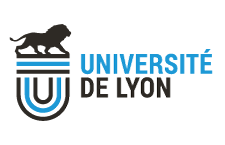Unités de recherche
Partenaire 08: Grenoble Institut des Neurosciences
Biologie, médecine, santé
- Adresse :
- INSERM U-836 Equipe 6 "Rayonnement Synchrotron et Recherche Médicale",
Institut des Neurosciences de Grenoble.
ESRF - Ligne Médicale - BP 220
38043 Grenoble cedex - Tutelle :
- CHU Grenoble - UJF - INSERM
Organisation
Représentant: François ESTEVE
Explore, understand and treat the brain. This new research center aims at a better understanding of the brain using a multidisciplinary approach, from cell to human, with state-of-the art techniques. The European Synchrotron Radiation Facility (ESRF) is one of the important instruments dedicated to research on an international scale. In its early building phase (1988), our University (University Joseph Fourier, UJF) and the Grenoble University Hospital (CHU) were asked to jointly develop a beamline dedicated to the medical applications of this outstanding X-ray source. Synchrotron X-ray sources produce high flux photon beams in a wide range of energies (10 to 100 keV). This high brilliance makes possible the selection of a narrow energy band (i.e. monochromatic beam) with a flux still sufficient for in-vivo imaging or radiation therapy applications.
The aims of the U836/6-RSRM team (Leader: François Estève) are to develop, together with the ESRF, new tools and new methods in the imaging and in the radiation therapy research areas:
X-ray Imaging: One can obtain static or dynamic images in projective or tomographic mode. The use of monochromatic radiation allows the development of new imaging techniques, such as the K-edge subtraction method. This technique permits to identify and to measure (in an absolute scale) concentrations of various heavy elements. In vivo images can be obtained after infusion of heavy elements, such as iodine or gadolinium, providing a direct measurement of the elements concentration in 2D or 3D. Two clinical research protocols have been carried out using the K-edge method for the study of coronary arteries re-stenosis. A new method called “X-ray micro-fluorescence” and developed at the ESRF, provides trace elements (metals for instance) concentration maps at the cellular level. It has led to outstanding quantitative images of Pt, Zn, Cu, Fe, Se and other biological essential trace elements in human brain samples. This method is of great interest in basic neurodegenerative diseases studies and also in the following neuro-oncology project.
Radiation therapy and biology: different methods, applied to brain tumours, a core scientific area for the team, are under active exploration (conventional X-ray absorption, photon activation therapy, micro and mini beam radiation therapy). Basic radiation biology studies are developed in partnership with the JL Ravanat (LAA T. Douki in Grenoble). Based on basic radiation biology studies and preclinical trials and using ; a clinical protocol using the dose enhancement achievable with infused iodinated contrast agent will be carried out as soon as the final approval from the ASN is obtained (CPP and AFSSAPS already agreed). We have developed all the necessary modern tools for dosimetry control and safety (treatment planning software, safety control, etc.)
In partnership with the ESRF, our team plan to develop and validate applications at the interface of physics, biology and medicine, for the general use of a wide scientific European community.
The team gets eight scientific permanent positions; including physicians, physicists, and one engineer.



 Accueil
Accueil PRES LYON
PRES LYON Nous contacter
Nous contacter Archives
Archives WebAdmin
WebAdmin